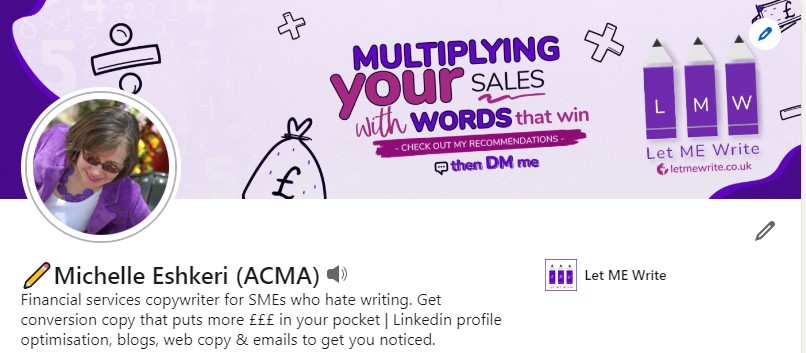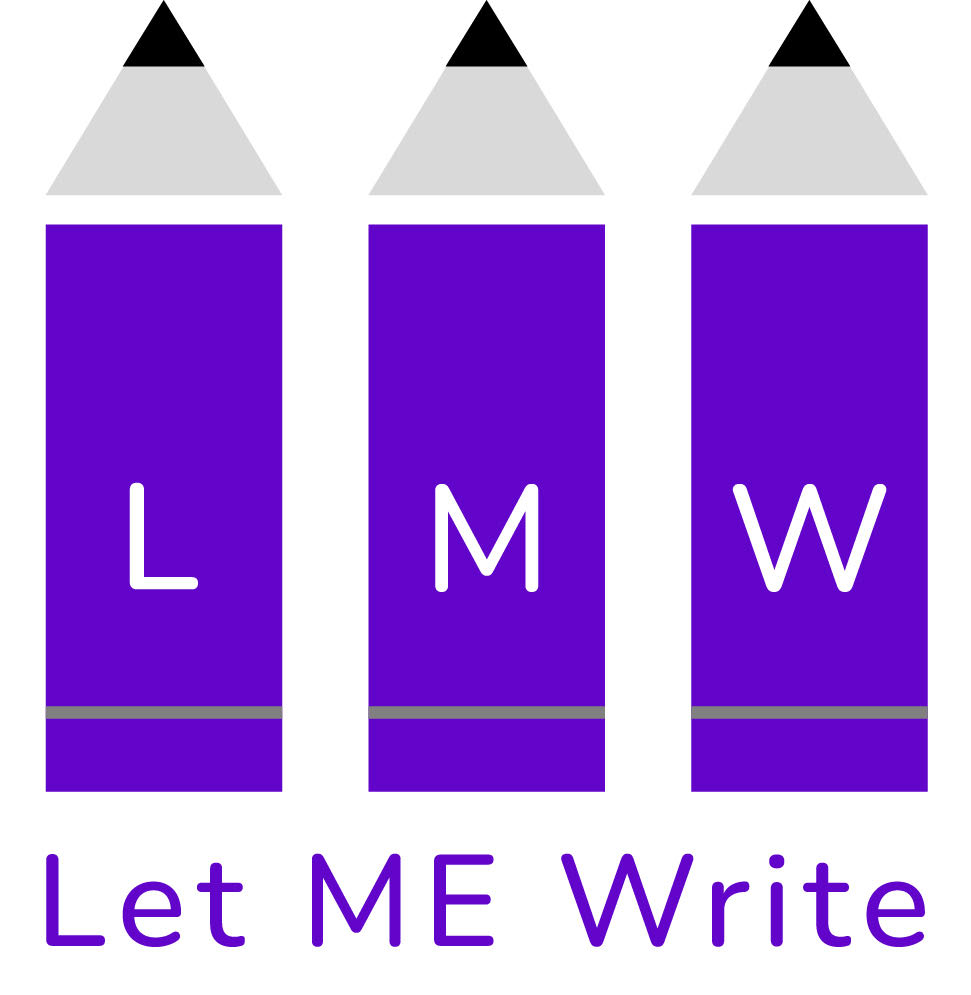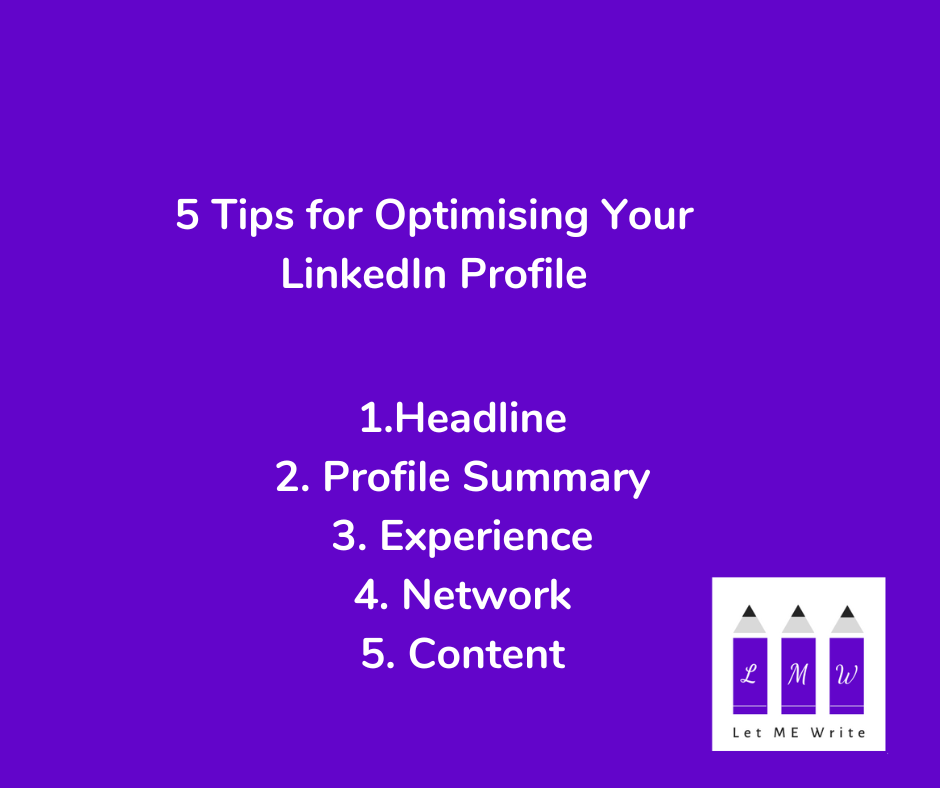Are you 100% happy with your LinkedIn profile?
Possibly not if you are reading this 😉.
Optimising your LinkedIn profile is hands-down one of the best uses of your time online. Your LinkedIn profile can be much more than simply an online CV, so it’s important to put in the effort to make it stand out. Here are five tips for optimising your LinkedIn profile:
1. Perfecting Your Professional Headline
Your professional headline is one of the first things potential employers or connections see when they come across your profile. First impressions last so you’d better make yours a good one. Your headline is the window to your LinkedIn presence so make sure it gives people a reason to learn more about you.
So, how do you create a headline that’s intriguing and enticing?
Simply using your job title is dull, dull, dull. Don’t do it.
Sure, it’s a good idea to include your job role/business in your headline but modify it with information that makes you attractive to the people you want to notice you.
Headline formats
A format that can work well both on PC and on mobile (more about this in a minute) is:
[Job role/Occupation] for [ideal client] to [achieve desired outcome].
Here are a few examples:
- Copywriter for finance SMEs where boring isn’t an option.
- Marketing consultant for Tech StartUps needing structure and focus.
Or create a very simple headline such as:
- I make writing and Linkedin easy for everyone.
- Battle-tested copywriting advice.
Or something with a little personality:
- I got 99 personalities & LinkedIn Ghostwrire is one
- COACHES: Click my face for stress-free lead gen
Here’s mine at the moment – please do connect with me on LinkedIn.

Your headline follows you all over LinkedIn on every post and every comment you make. People notice the headlines that make them laugh, pique their curiosity or address their pain points, so think carefully about how you can make yours work harder for you.
Remember that when viewed on a mobile, you’ll only see the first 6-8 words in the headline, so make them count.
Keywords
You must also include relevant keywords in your headline as this will ensure you show up when people are searching for what you do. Research the latest keywords that are most relevant to your industry and include them in your headline. For example, if you’re a marketing manager, including keywords like “marketing strategy” or “brand management” can help you show up in relevant search results.
Put yourself in your ideal client or employer’s shoes. What problems do they have that you solve? What are they stressing about that consumes their waking hours and stops them from sleeping at night? Your headline should talk to those pain points and to how you can fix them.
If you’re looking for a job in a specific industry, include industry-specific language in your headline to demonstrate your expertise and interest in that field but don’t go too heavy on jargon and acronyms that only a handful of people will understand.
Let your creativity shine through in your headline. Don’t be afraid to use humour, statistics or startling facts to get your ideal clients/employer’s attention. Just make sure that any humour or personality you incorporate is appropriate for your industry and audience.
2. Optimising Your LinkedIn Profile Summary
Your profile summary, also known as your About section is an essential component of your professional profile. Without an About section, how will people get a sense of who you are and what you can achieve? Use your About section to tell your ideal client or employer how you can make their lives better. It is an opportunity to tell your story and showcase your unique value proposition.
Creating your summary can be challenging for many LinkedIn users because you have a finite number of characters – only 2600, which is approximately 400-500 words. That means you must be succinct and focus on what matters to your target audience.
Do they really care much about your previous work experience and the qualifications you took at school? Almost certainly not.
Do they care about whether you can solve their pressing issue? Definitely.
Make your About section more about your ideal client than about you. Sure, you can include relevant details about your services, but aim to focus most on the outcomes you can achieve for clients and the benefits they receive from working with you.
Showcasing Your Unique Value Proposition
So, what sets you apart from others in your field? Why do you make the best choice when someone is considering working with you? What are your unique strengths and skills? This is what makes the difference when you are optimising your LinkedIn profile.
Think about the specific skills and experiences that make you stand out. Are you a creative problem solver? A strategic thinker? A master of data analysis? Use this space to highlight your strengths and communicate your value to potential employers or clients.
Storytelling Techniques
Humans love stories. Stories capture our attention in a way that other prose does not. But many business owners find storytelling difficult.
Think about how you have delivered for a recent client and give an account of what happened.
Present your current experience or a recent achievement in business or work by telling a story. Rather than simply saying I did this and that and this was the result, find ways to set the scene, taking the reader into the journey using sensory details and descriptions of emotions. Make it more engaging and therefore more memorable by using a storytelling approach.
Your profile summary needs to grab your reader’s attention, give them an instant reason to keep reading past the first sentence, demonstrate you understand their pain points, present a solution and ask them to act.
A great copywriting technique for LinkedIn profiles is AIDA – Attention, Interest, Desire, Action. You can learn more about how to use this with examples in my blog Three Techniques For Writing An Awesome LinkedIn Summary
3. Maximising Your Experience Section
One area of your Linkedin profile that often gets less love is the Experience section. Whether you are looking for clients or for an employed role, this is a vital area to complete and use to its full potential.
For each of your previous experience areas, ensure you present your past achievements and in a results-oriented way. Be specific about how you’ve helped others to reach their goals.
Here are some tips to help you maximise your experience section:
Highlighting Relevant Skills and Accomplishments
When writing about your past experiences, it’s important to focus on highlighting the skills and accomplishments that are most relevant to your current goals. For example, if you’re an accountant looking for clients, show how you saved your client tax or helped their business become more profitable. Numbers are highly attractive to human brains so use them to quantify your impact.
Use Action-Oriented Language
This is all about explaining what you actually did, using verbs. Start your bullet points with strong action verbs like “managed,” “created,” or “implemented” to demonstrate your active role in your past positions. Again you can use storytelling to make this section more interesting and compelling for the reader.
Remember, your experience section is not just a list of job titles and responsibilities. It’s an opportunity to showcase the unique value you offer. Take the time to craft a compelling and detailed experience section that highlights your skills, accomplishments, and expertise.
4. Building a Strong Network
LinkedIn is a social network, and building a strong network is essential to getting the most out of the platform. Here are some tips for building and maintaining a strong network:
Connecting with Industry Professionals
Connecting with industry professionals on LinkedIn is a great way to expand your network and gain insights into your field. You can choose to send a connection request with or without a message. If you are sending a message, don’t use a bot to do it – make it personalised and pertinent as this can increase the chances of acceptance.
Connecting with others in your industry will give you access to quality thought leadership which you can build on in your own content. Aim to connect to at least a few new relevant people each week to steadily grow your network of high-quality connections.
Engaging with Others’ Content
A big part of making LinkedIn work for you is how you build relationships. This is done through leaving meaningful comments on others’ posts as well as using direct messaging to chat with people – without pitching them! Think of LinkedIn just like any other networking and behave how you would if you were meeting someone face to face. If someone makes a comment on your post, if you don’t respond, it’s pretty rude so aim to do your best to keep the conversation flowing.
Engaging in LinkedIn Groups and Communities
Joining LinkedIn groups and engaging in discussions could be a good way to build and maintain a strong network – if you can find an active LinkedIn group. Some groups are very quiet so you have to hunt around for the good ones. Groups can be another way to find new like-minded professionals to connect with and learn from their experiences and insights.
Attending LinkedIn Events
Many creators on LinkedIn offer online events, such as webinars, masterclasses and networking. Events are another great way to find new people in your industry or who are interesting in the same things you are. You can build your network and learn from industry experts.
It takes time to build your network on Linkedin – it’s not about connecting with anyone and everyone who asks to connect. Better to curate a smaller higher quality network who is keen to hear from you than thousands of people who are indifferent to what you can offer.
5. Content that converts
One of the best ways to demonstrate your thought leadership and expertise is by sharing content on LinkedIn. Here are some ideas for creating and sharing content:
Creating your own thought leadership content – this could be simple posts, carousels or even articles. Establish yourself as someone who has something useful to contribute rather than simply reposting others’ content or sticking up a selfie to try to game the algorithm.
Curating content from others in your industry – share articles, insights and deep dives from thought leaders in your industry with your own opinions added to demonstrate your knowledge and keep your network up-to-date on industry trends.
By following these tips and optimising your LinkedIn profile, you can stand out to potential employers, customers and collaborators. Review your LinkedIn profile regularly so you always come as professional and knowledgeable to those who visit your profile on Linkedin.
Getting support for optimising your LinkedIn profile is easy
If you are finding it tricky to optimise your LinkedIn profile, email me and I’ll give you some suggestions. Of course, you could always just pay me to do it for you with my LinkedIn Makeover Package😁.

